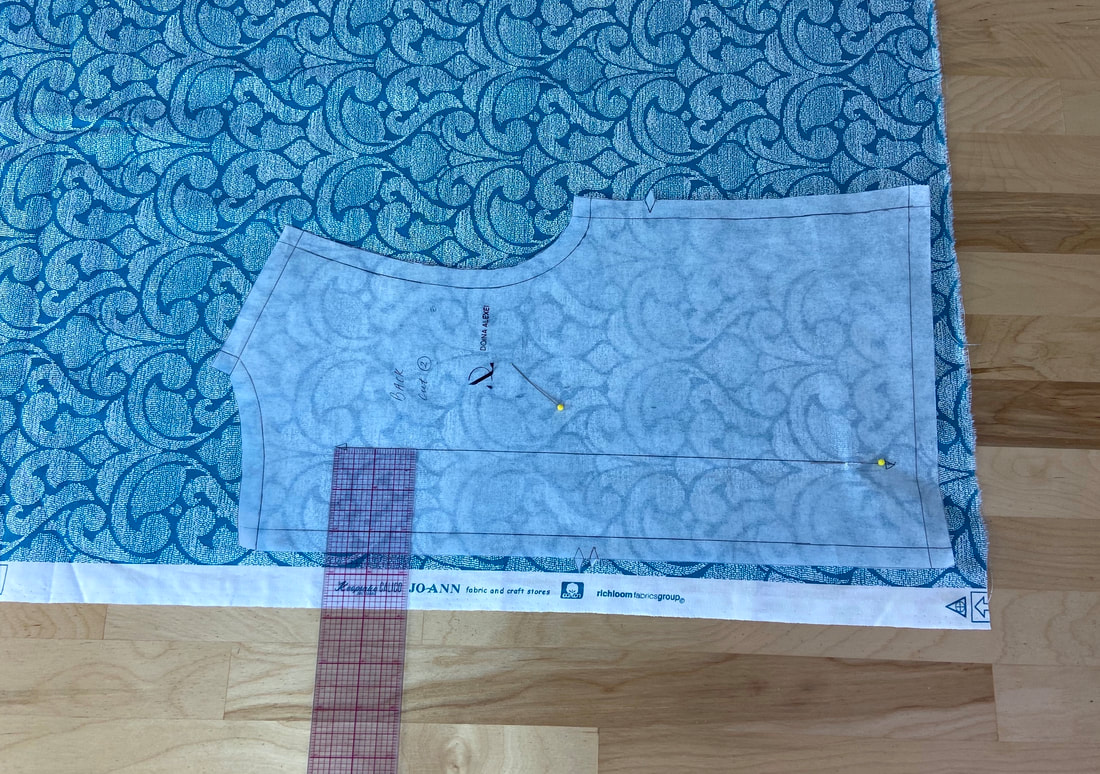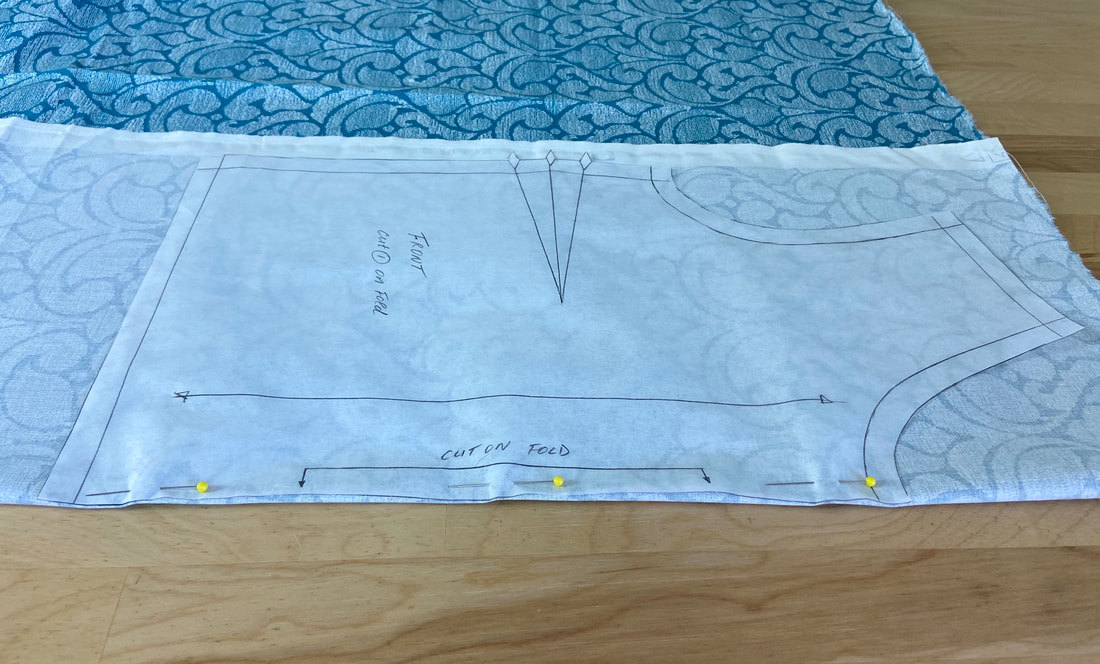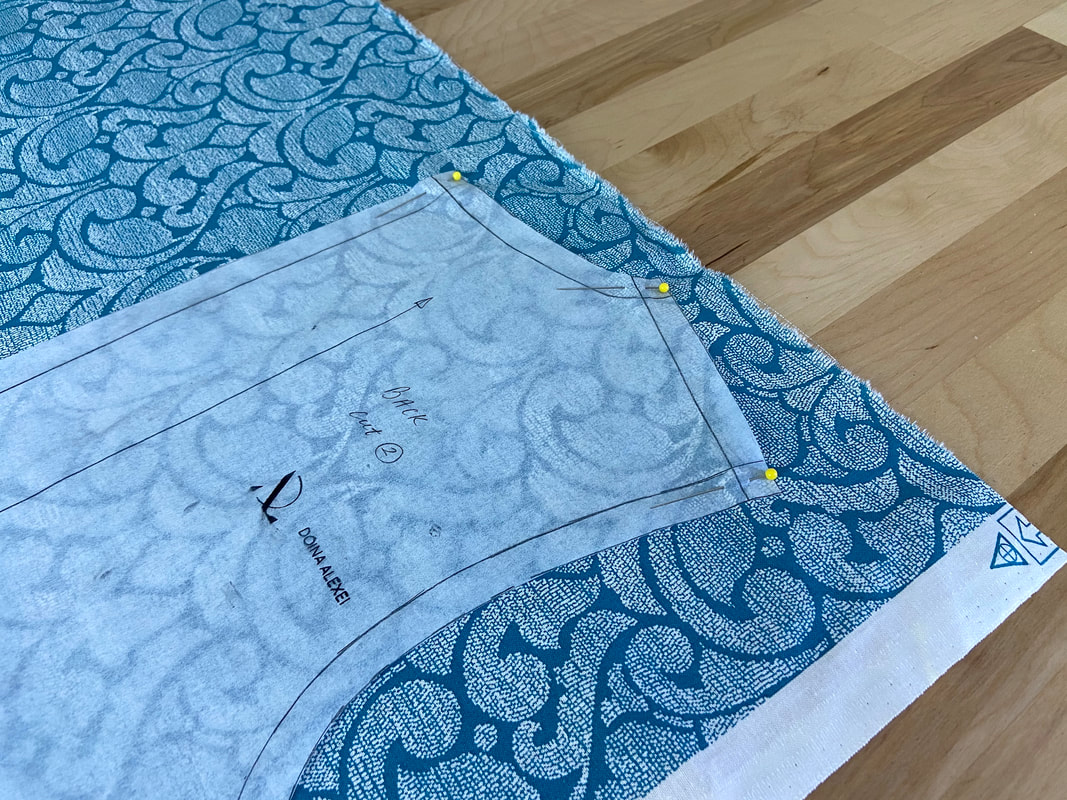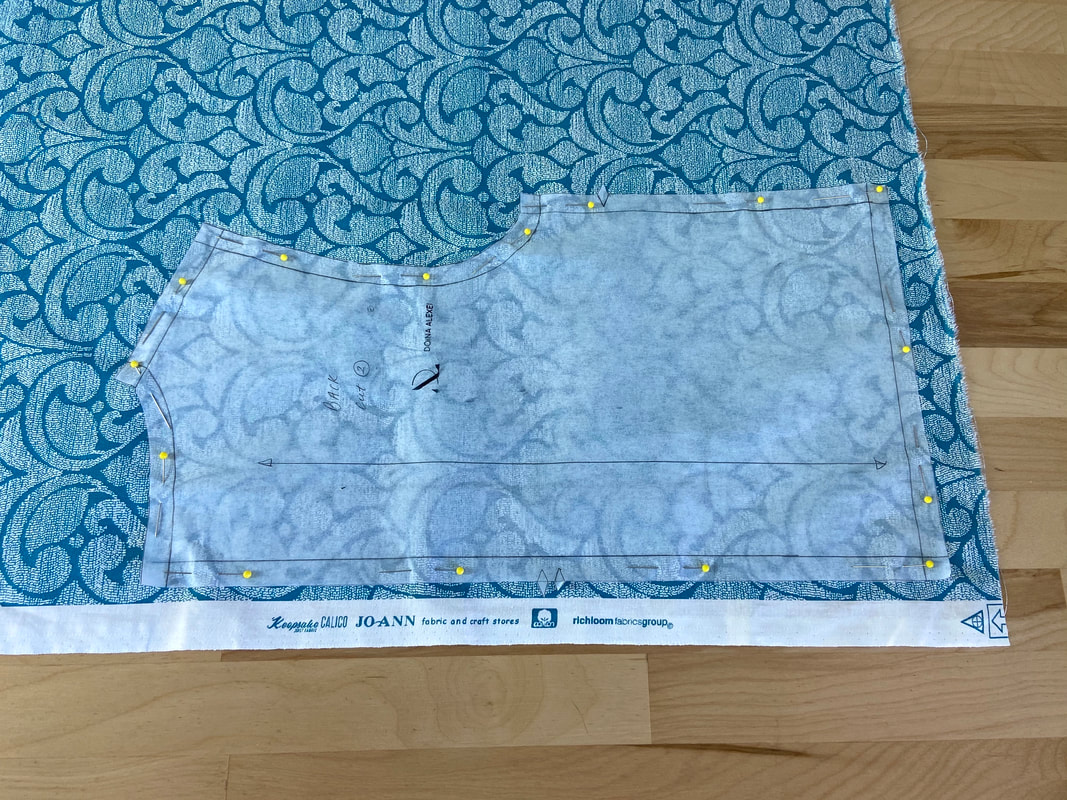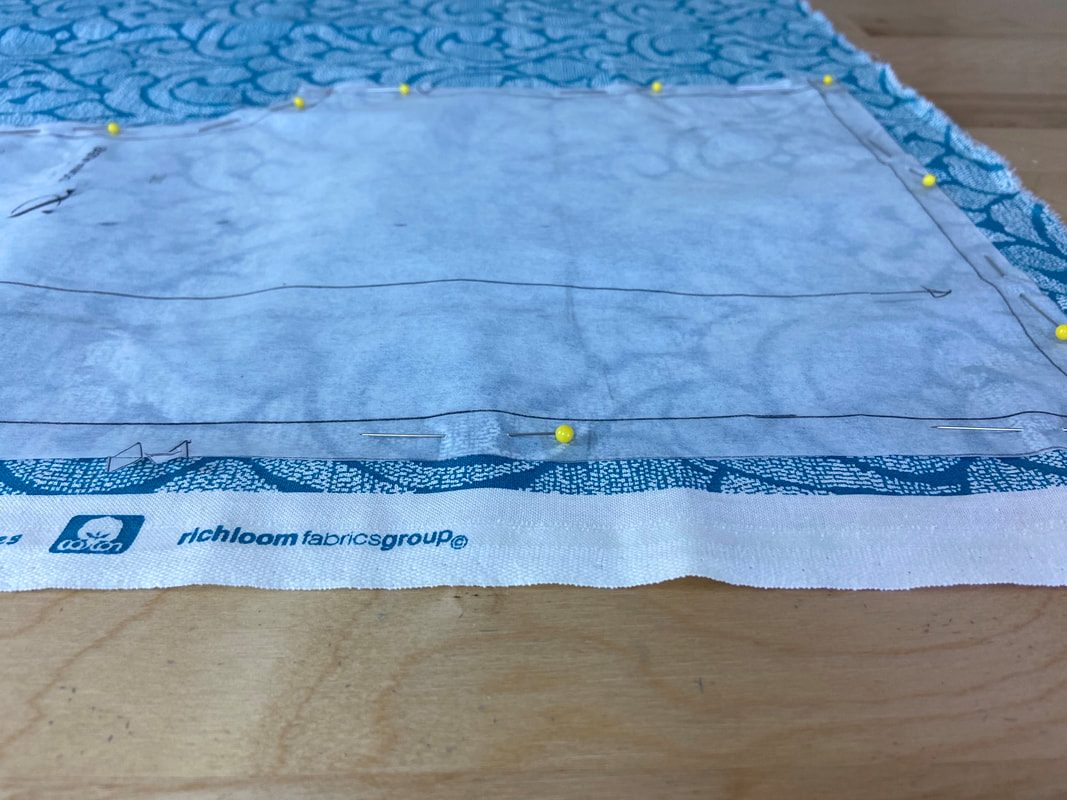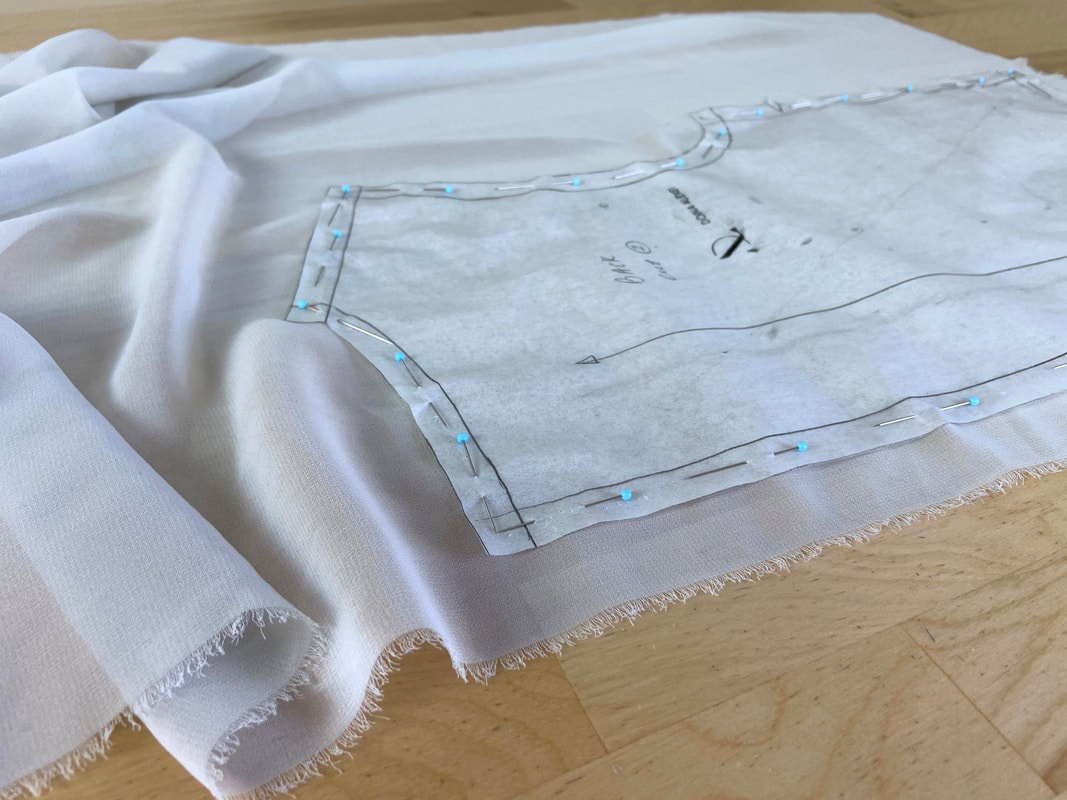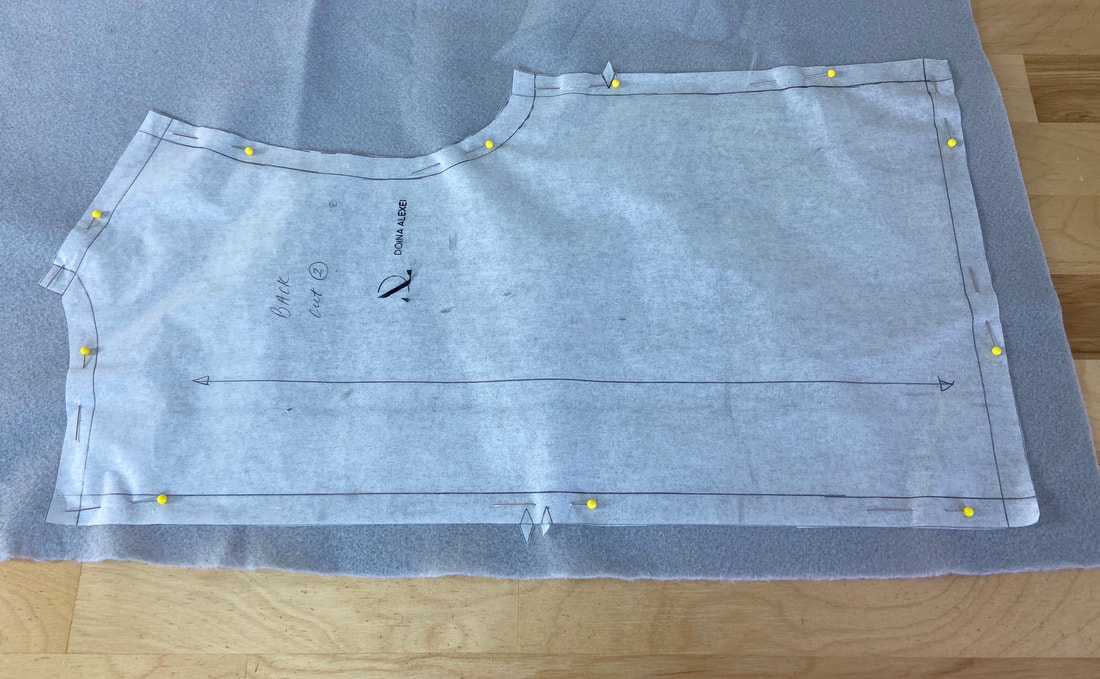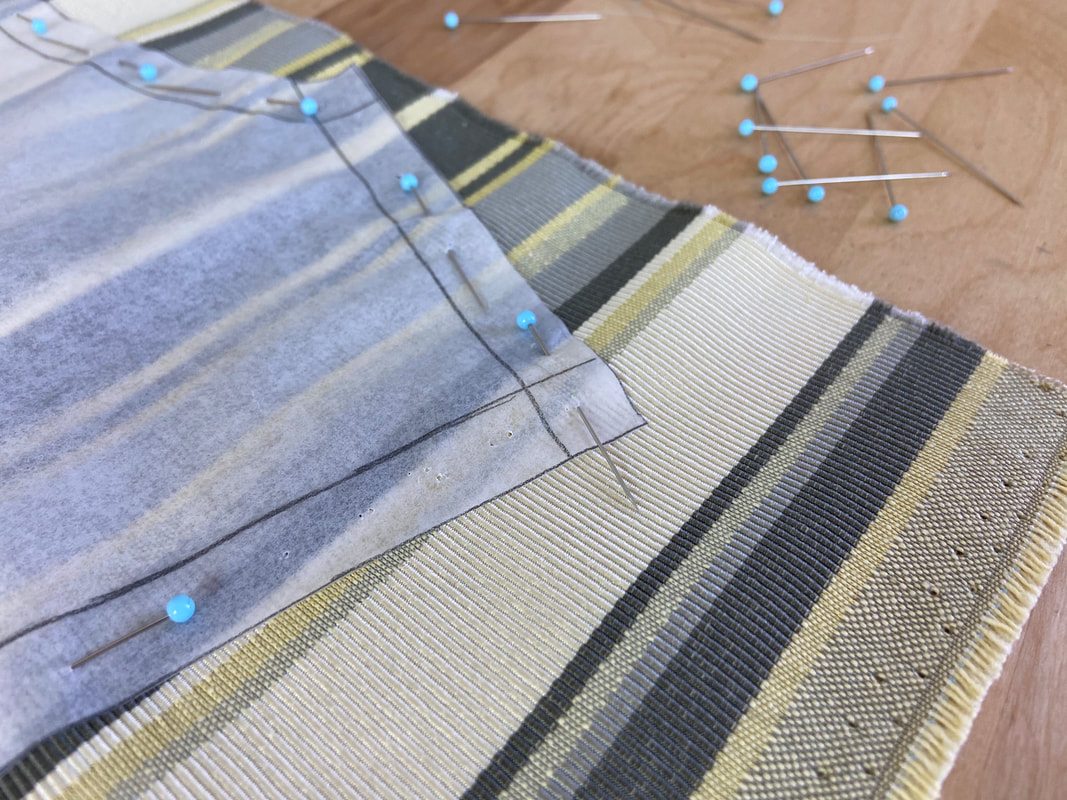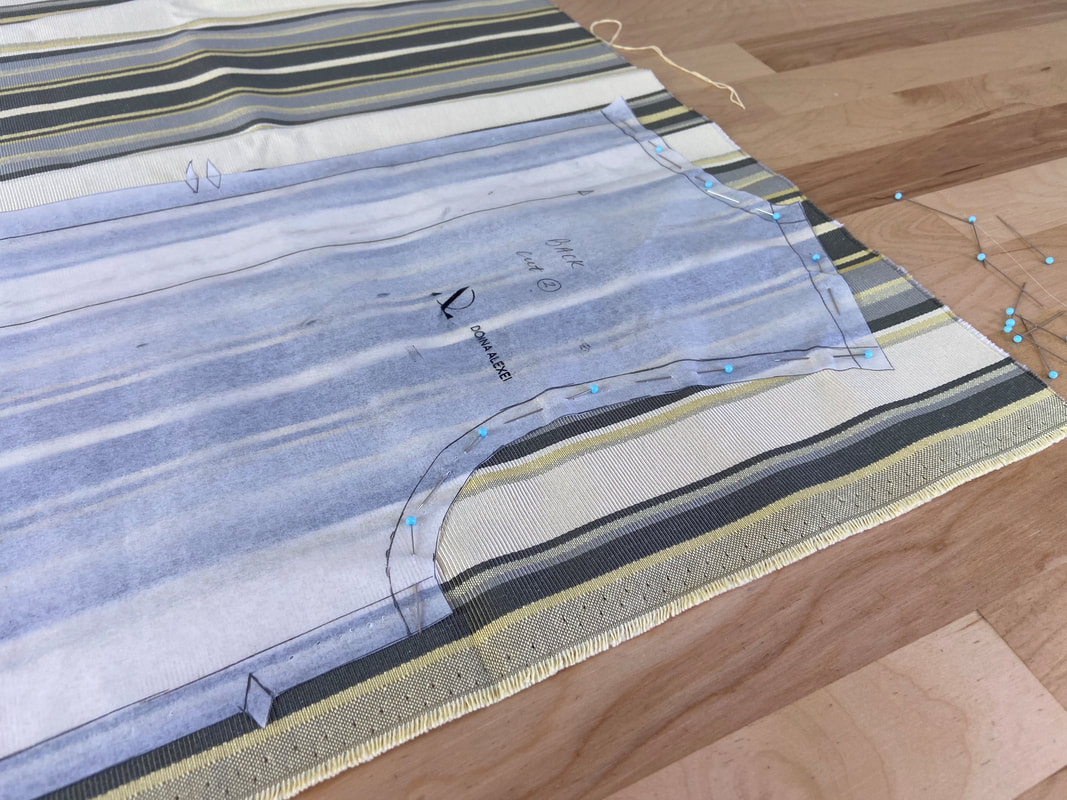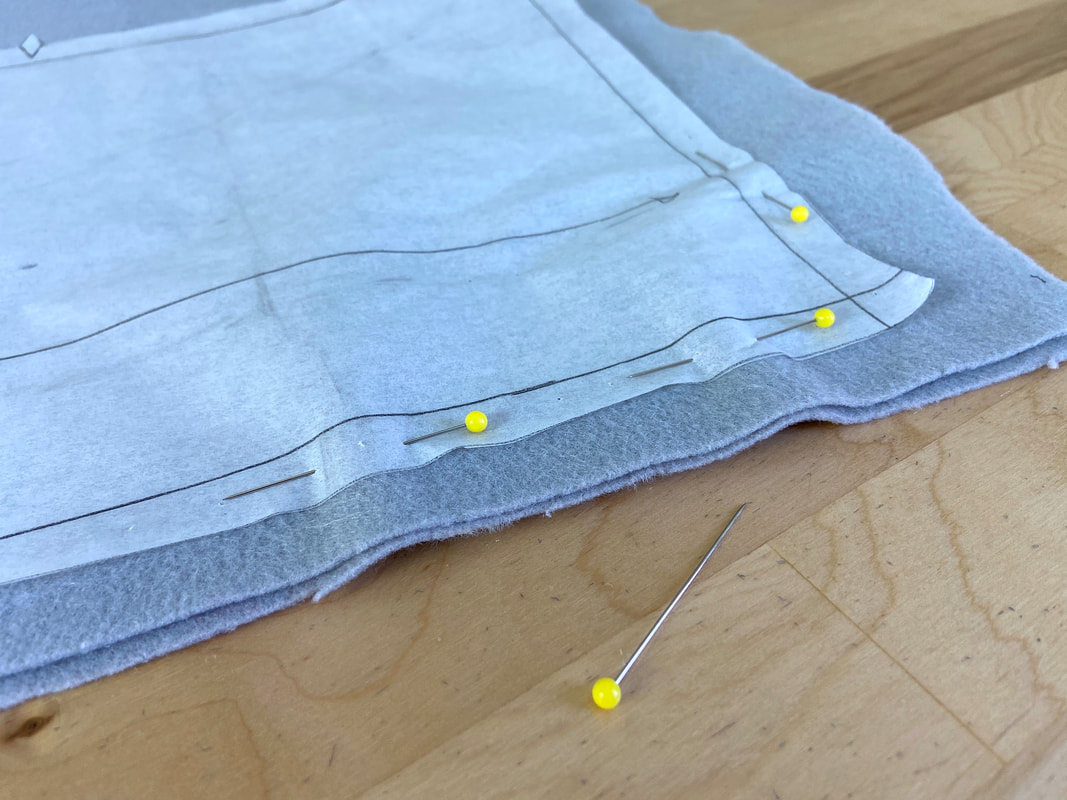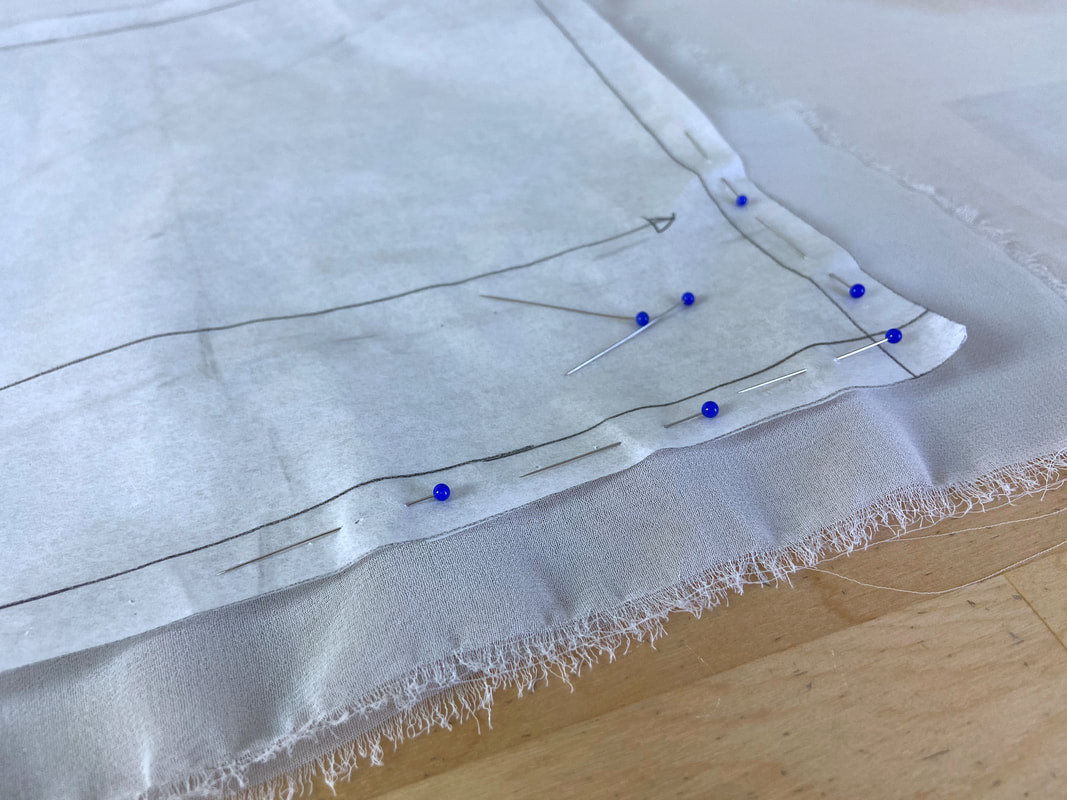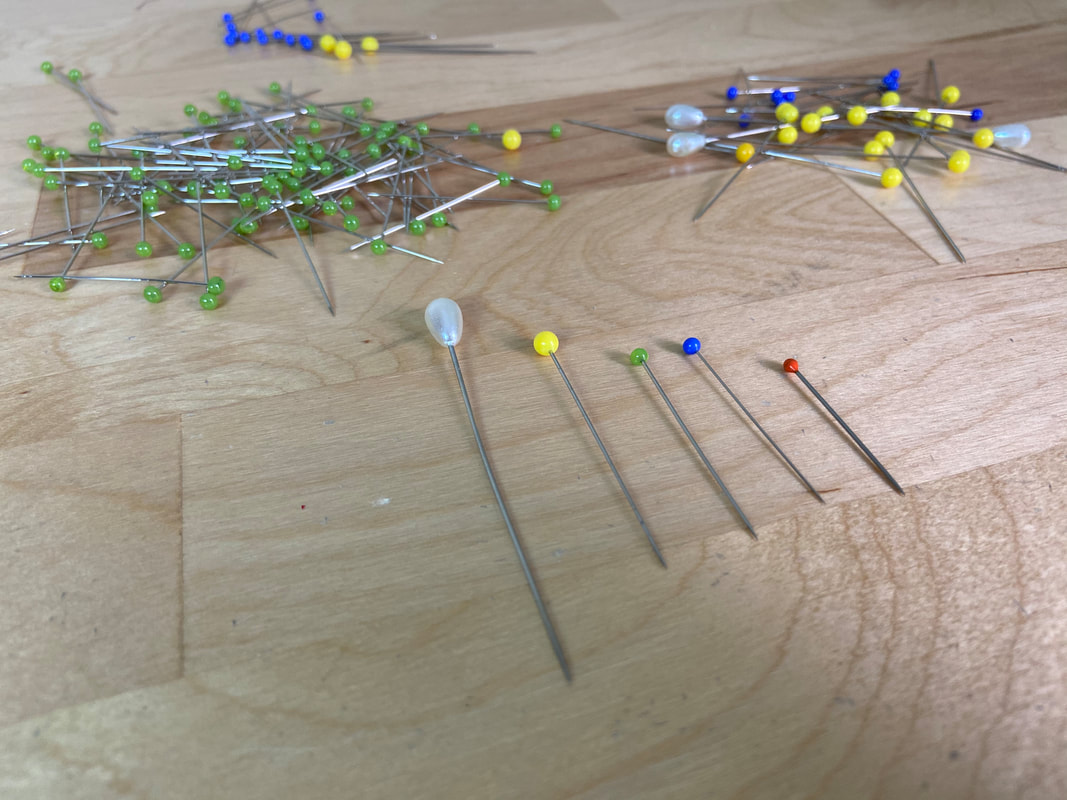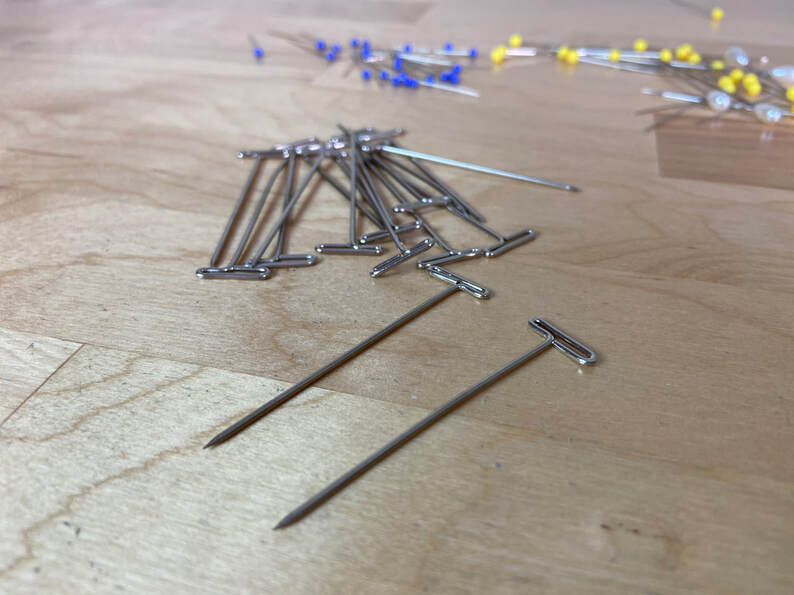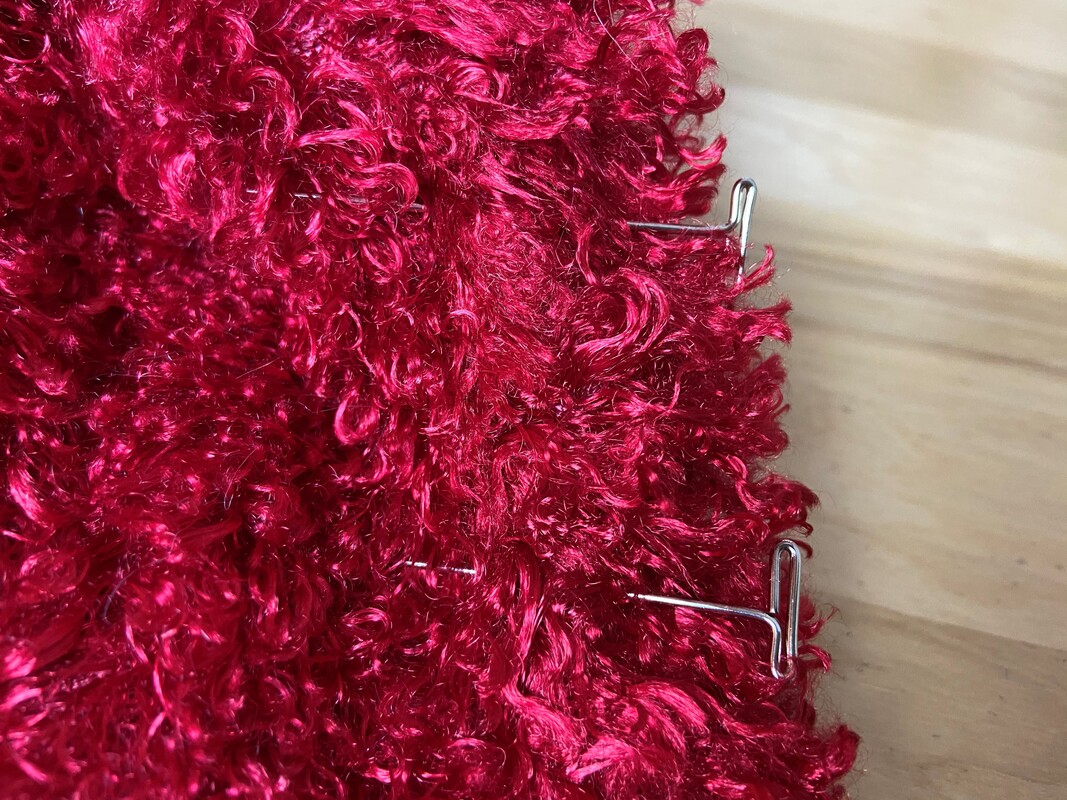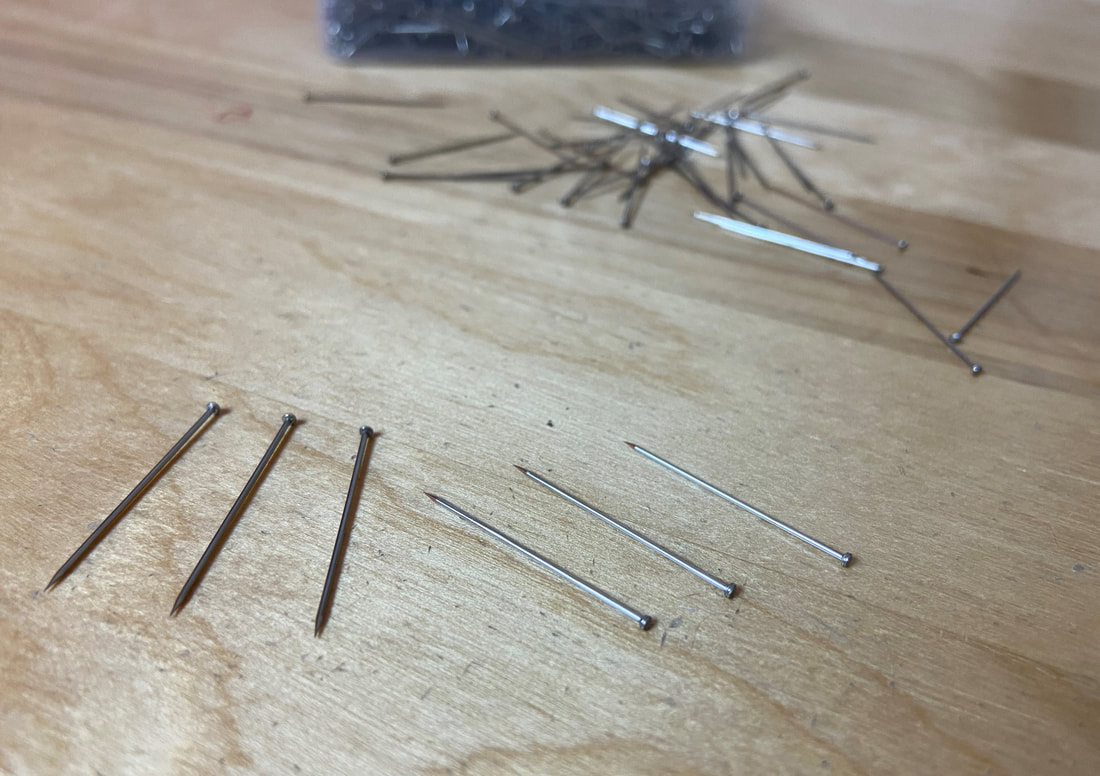After it has been correctly aligned according to grainline and the fabric’s selvage edge, the pattern is pinned to the fabric layer(s) in preparation for cutting.
Patterns are pinned from the left most corner out towards the right for full patterns, and from the fold to the selvedge edge for double cut and cut on fold patterns.
Two Standard Rules To Follow In The Pattern Pining Process:
Rule 1: When working with full patterns (not cut on fold), the first thing that should be aligned and pinned is the grainline as shown.
Remember, the grainline is always perfectly parallel to the fabric selvage edge or the folded edge which should itself be parallel to the selvage.
Keep in mind that pattern pieces should be aligned as close as possible to each other, making sure their grainlines are perfectly parallel to the selvage edge regardless of where they are located on the fabric.
Rule 2: If your patterns are cut on fold style, fold the fabric such that the selvage edge is parallel to the fold (fabric face sides touching), and pin the pattern along the folded edge.
After pinning down the grainline and fabric fold (if your patterns are cut on fold), smooth out the patterns towards the unpinned edges with your hand such that they lay completely flat against the fabric.
Pin down corners, extensions, and pattern edges next.
Basic Concepts To Follow When Pinning The Remainder Of Your Pattern:
- Always pin sewing patterns along the edge, pinning through the seam allowance when possible.
- Inserting the pins vertically, parallel to the pattern edges as shown above will keep the edges laying flatter and keep the pins directed comfortably for cutting.
- For thin, light, loosely woven, or slippery fabrics, insert pins closer together to achieve more control during the pattern cutting process.
- Pin less densely for structured, medium to heavy weight, thick fabrics. Keep in mind however, that inserting too many pins may wrinkle the fabric layers and thus cause uneven cut lines.
- While pinning along the pattern edges, the pins should not poke out from the pattern surface or they will get in the way of cutting the fabric right next to these edges.
- Insert additional pins along curved edges. Doing so will provide increased control when cutting next to these more difficult lines.
- Use thick, longer pins for heavier, thicker fabrics or when cutting multiple fabric layers. Longer, thicker pins work well with cotton, wool, and medium to heavy blends.
- Use thinner, sharper pins (silk pins) for fine, thin, light fabrics like chiffons and various types of silk.
Three Pin Styles Used In Dressmaking
Ball head pins have a plastic or glass ball at the opposite end of the needle point.
They are best to use in apparel as they provide the most comfort for handling and removing during machine stitching. Ball head pins are available in a variety of different thicknesses and lengths depending on the fabric/project at hand. Thinner, sharper pins work best for lightweight, thin fabrics.
T-shaped pins are used for pinning together loosely woven or high pile fabrics. The T extension stops the pin from slipping through the fabric weave. It also increases the pin’s visibility against highly textured, 3-dimensional fabrics.
Flat head pins are used mainly for draping on a dress form as they are shorter and blend into seams easier. When draping on a dress form, a flat head pin will appear less visible which will help the draped garment closer resemble the finished design.
Flat head pins are also used during the sewing process when a large number of pins is needed to secure small folds such as pleats or tucks. They are smaller, shorter and provide less bulk. However, they are less comfortable to handle than the ball head and T-shape styles described above.

